The Food Commodities and Ingredients Group's results of its 'Ask a Food Scientist' campaign to mark Food Safety Week held in June 2009
Questions and answers on the dangers of cream cheese icing for cakes, the virtues of olive oil, the calorific values of 'black and blue' steaks, and why flavours can be favourites for some, and abhorrent to others.
We also offer advice on how to become a food scientist - if you're really bitten.
Should cream cheese icing go in the fridge?
1) Cream cheese icing for cakes: should it be refrigerated? Lots of people seem NOT to refrigerate it, but I don't want to take any risks! Does it depend on how much sugar is in the recipe, and if so, what sort of proportions enable you to not have to refrigerate?
The stability of this type of product is in the main due to the water activity (aw) within the product.
When substances such as sugars and or salts are dissolved there is a reaction between the substance and the water. A number of the water molecules are bound by the molecules of the dissolved substance. The substances dissolved in the water reduce the number of unattached water molecules and by this reduce the amount of water available for microbial growth. The extent to which the water activity is lowered is dependent on the concentration and type of dissolved substances. This means that the water-binding capacity of the ingredient influences the amount of water available for the growth of micro-organisms.
The measurement of equilibrium relative humidity above the food is regarded as the moisture available or water activity.
Typical water activity of food products are available and compared with the minimum relative humidity levels at which the growth of groups of viable micro-organisms in their vegetative state can develop:. e.g Osmophilic yeasts 0.60; Moulds 0.75; Yeasts 0.88; Salmonella 0.93.
The water activities of a wide range of foods are measured within the process of food product development and control by food technologists, microbiologists and chemists and some examples are Cheese Spread 0.96, Salami 0.82 and Dried Milk with 8% total moisture 0.70.
To conclude, refrigerating slows microbial growth but does not stop it. However, as it is not possible to get an easy estimation of water activity, and in this circumstance we are unsure as to for how long the cream cheese icing needs to be kept and do not know the recipe being used, it would probably be wise to take the cautious route and refrigerate it.
Do I have 'superpower saliva'?

Generally people would be familiar with the presence of the enzyme alpha amylase in saliva from school biology where starch is broken down in the mouth to shorter chains of saccharides and ultimately the disaccharide maltose. How far this goes will depend on many things including the degree to which the starch in the foodstuff is cooked in the first place and how long the individual chews for.
The questioner takes this a little further, as it is indeed true that all saliva is not the same. Firstly salivary flow can vary depending on individual predisposition and factors such as how hungry you are, the stimulation of flow by cooking aromas before eating etc. Also the composition of saliva can vary according to diet, particularly in malnourished individuals. But for this person, I think it is more likely a genetic factor. There have been studies on the genetic variation in human salivary amylase and these studies indicate that many individuals have multiple repeat copies of the salivary amylase gene. The number of copies then correlates to the amount of amylase produced. There is thought to be an evolutionary element to this, the higher number of gene copies tends to be associated with populations traditionally exposed to high starch diets eg Japanese.
Finally it is worth mentioning that the condition of the starch in processed foodstuffs may vary. In its native form corn starch exists as a giant granule (in molecular terms) tightly packed with massive chains of starch molecules. In this form it is quite difficult for the amylase enzymes to get at, but as it is cooked in the presence of water, the granule swells and eventually bursts, the process of gelatinisation. Gelatinised starch is much more susceptible to enzymic degradation. So a sauce that has been thickened by cooking the starch may thin quite quickly under attack from a strong dose of salivary alpha amylase, especially if it is near to 37degrees C body temperature and with a touch of salt, which is the optimum for the enzyme.
I hate cumin, but others love it. Why?
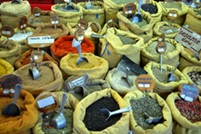
We had two excellent answers from our panel, and rather than trying to combine the two, and so potentially lose some of the original meaning, we decided to use both answers:
Answer 1) Two main elements influence the like/ dislike of aromas. The first is centred on a repulse reflex where the smell triggers the body to move away from the source of the smell, or eject it from the mouth if consumed. Faecal smells, rotting sulphury notes, rotting protein, sour sicky milk, all cause this in humans to some extent (but in some animals and insects they act as attractants). The molecules that make up these smells are present in most foods but usually at very low levels, not offensive - but in some cases, the individual is more sensitive, and reacts when others do not. This is a safety reaction to warn of danger.
Cheese is a good example where - ripening cheese is perfect food for some, but repulsive to others, especially because of certain fatty acids such as butyric acid.
The second element is about association, and is when a smell triggers a memory in the brain of some previous repulsion. This a learnt response and difficult to overcome, so in the case of cumin for instance, due to the presence of skatoles and indoles, it has a strong association with underarm sweat. Smoked foods, for example, can trigger panic in burn victims. Sometimes it is influenced by childhood memory, if one didn't like it as a child one may carry on with the behaviour even if objectively there was no real dislike at all.
In the case of the foods listed I cannot easily think of a common chemical link, although herbs de provence sometimes contains oregano. My guess would be an indole which is from the purine family of chemicals, normally produced as a result of protein degradation. White pepper can sometimes be high in indoles so it would be interesting if the questioner dislikes it.
It is, therefore, absolutely conceivable that an individual has an enhanced sensitivity, or subconscious association, to a particular aroma chemical or family of aroma chemicals which would then put them off particular foods.
More on cumin, bell peppers, and others
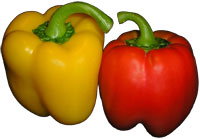
Oregano, cumin and bell pepper all contain the following: lots of the same terpenes (hydrocarbons): camphene, 3-carene, beta-caryophyllene, limonene, beta-myrcene, alpha-pinene, gamme-terpinene, terpinolene. Some of the same alcohols: linalool, alpha-terpineol. Many of these have floral type odours. All of the herbs have many other volatile compounds as well (such as aldehydes, ketones, esters and phenols, but less of these appear to overlap between oregano, cumin and bell pepper.
Of the multitude of flavour compounds in the different herbs / foods; each have different thresholds; i.e. levels at which you can detect them. These can vary enormously between compounds, and between individual people. The thresholds also vary between what you can smell in the air and what you perceive in your nose (retro-nasal smell - the main part of flavour) when you eat the food. As well as variations in sensitivity between people (measured as different thresholds), some people have anosmias to certain flavours (they cannot smell them at all).
There is then also taste and chemesthesis to consider. The taste of a food is the contribution of the non-volatile tastants that you perceive through the taste receptors held in the papillae on your tongue. These are sweet, salt, sour, bitter and umami (savoury taste). People have different sensitivities for two reasons; firstly the number of papillae on the tongue varies (so a 'supertaster' is more sensitive to all tastes) and secondly genetic differences in bitter perception. There are at least 25 bitter receptors and one of these has different variants: highly sensitive, completely insensitive, or mid-sensitivity. This affects perception of bitter compounds in brassica vegetables, for example. However, the foods you mention are not particularly bitter.
Chemesthesis, is the trigeminal sense which allows you to detects 'pain' within a food flavour, for example the heat of chilli or horseradish. A supertaster, with more papillae has more trigeminal receptors around the papillae and is more sensitive to the 'heat'of spices.
The reasons you like or dislike a flavour may be due to a high sensitivity for that flavour - but of course there can by psychological reasons as well. Dislikes are often associated with a bad experience of a food; for example from a previous physical effect (like food poisoning) or emotional effect (eg an argument took place whilst you once ate that foodstuff).
Does my rare steak have fewer calories?
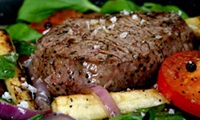
On a simplistic level, 100g of raw meat has fewer calories than 100g of cooked meat, because water makes up a larger percentage of the product when raw. When cooked, this moisture is driven off, and depending on the cooking method, there will also be a small loss of fat as well.
A raw rump steak has about 200 calories per 100g, a grilled one about 220 calories, and a fried one about 240.
However, if one was to take 100g of raw meat and cook it, one ends up I think with about 80g of cooked meat (if well done); so to be fair, one should compare 100g cooked meat with about 120g of raw meat. If this meat was grilled, you would find that the raw meat has the most calories.
How do I become a food scientist?
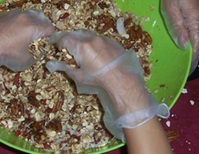
There are several routes that can be taken - it also depends on what one is thinking of as a 'food scientist'. Typically two routes can and are often taken.
One is to study a food based degree at university. There are many courses available at the UK universities. As an example, a quick search of revealed the following degree courses on offer, but there are more:
BSc (Hons) Nutrition & Food Science
BSc Brewing Science
BSc Food Microbiology
BSc Food Science
BSc (Hons) Food, Nutrition & Health Science
BSc Food Technology
BSc (Hons) Food Quality, Safety & Nutrition
BSc Supply Management (Food)
Foundation Degree in Food Manufacture
Foundation Degree in Food Studies
Foundation Degree in Food Product Innovation
To find out what A-level choices would be appropriate for these courses it is best to approach your career advisor, or certainly try the individual universities. The Institute of Food Science and Technology (IFST) has a website showing which universities and colleges offer what courses.
Another route is to work in industry, and then take an MSc to give the insight into the theory and maybe take the opportunity to specialise in an area that has been of interest -so one can do an MSc in:
Food Science, Safety & Health
Food & Consumer Safety
Food Technology - Quality Assurance Food
Safety & Control
Food Regulatory Affairs
Food Biotechnology
Food Quality Management
Human Nutrition (Public Health/Sports)
Is olive oil really that healthy?
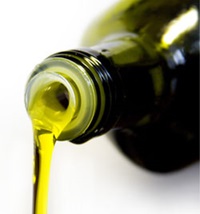
In ancient times, apart from the special flavour of olive oil, the Mediterranean people considered it not only as an excellent food but also a healing agent. During the past 60 years or so a renewed interest was generated in the nutritional and health aspects of olive oil.
In the 1950s a series of studies into the relationship between the degree of saturation of consumed fat and the incidence of coronary heart disease (CHD). It was found that Mediterranean people (Italian and Greek in particular) who consume considerable quantities of olive oil, have a much lower incidence of CHD than people elsewhere (eg: Finland and the USA.), who consume more saturated fats.
It is also reported that the serum cholesterol level among olive oil consumers was significantly lower than among eaters of more saturated fats, however the data did not prove beyond any doubt that olive oil consumption prevents CHD. Olive oil is also relatively rich in squalene which reduces the endogenous synthesis of cholesterol.
These observations are corroborated by similar epidemiological studies and it was noted that the number of deaths caused by myocardial infraction per 100,000 was 60 in the population of Heraklion, the largest city in the Greek island of Crete (where 29% of the dietary calories come from olive oil) and 395 per 100,000 in the USA.
In 1980 it was contended that the high ratio of monounsaturated fatty acids imparts antiatherosclerotic properties to olive oil, while the low content in polyunsaturated fatty acids (PUFA) of this oil, in comparison to other vegetable oils, diminishes the risks associated with high PUFA intake. Olive oil has a high mono-unsaturates content (70% mainly oleic acid) and has a low content of saturates (15%).
In addition, some workers consider the ratio of vitamin E to PUFA in olive oil to be more favourable to health than the ratio in other vegetable oils:

